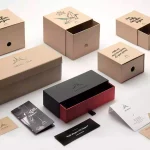Table of contents
[tta_listen_btn]
Rattan is a natural material that is one of those timeless in the world of fittings and decoration. Whether through designer furniture or beautiful decorative assortments, natural rattan mixes with aesthetic subtlety, lightness and robustness. It benefits from a simple and authentic design that allows it to amaze an interior in different ways. Naturally warm, rattan also impresses with its ability to decorate and warm any room in the house: bedroom, living room, dining room, bathroom, kitchen and why not an exterior or veranda.
What is rattan?
Rattan is a full and thorny vine, belonging to the palm family. It is a climbing plant with thorns that comes mainly from Southeast Asia. It thrives in tropical jungles where it finds everything it needs to thrive, such as humidity and warmth. Rattan is made up of many plant fibers. These intertwine and form a very solid solid rod, all with a diameter ranging from 1 to 46 millimeters. Its peculiarity is that it can grow generously, even reaching several hundred meters in length.
Rattan stems are naturally flexible and robust, which makes them very popular in basketry. Easy to work with, they allow the manufacture of original, personalized and made-to-measure furniture, as well as multiple accessories and objects. Harvested and cut, the rattan is then passed through a steam oven to soften its fibers and facilitate its work. Softened, it can indeed be curved to create the desired shapes. This is called the bending technique. It is then wetted in cold water, assembled, bound and then sanded. Several finishes are possible depending on the shade and color you want to give it.
What are the differences with bamboo and wicker?
Rattan is often confused with two other plants, bamboo and wicker. However, their characteristics and properties are different. Also widely used in basketry, wicker comes from the stems of willows, a tree that likes the cool and temperate regions of the northern hemisphere, unlike rattan, which prefers humid and hot jungles. Wicker is also widely used for the design of woven baskets. Wicker is a little thinner and more brittle which makes it less commonly used for making chairs and furniture.
Bamboo is an Asian plant with rhizomes. It is distinguished by solid rods that will allow the design of furniture structures (sofas, garden furniture, beds, headboards, etc.). Unlike rattan, the stems of bamboo are hollow which makes it less malleable and more difficult to work with. On the other hand, the two materials are complementary and often associated to imagine beautiful furniture.
How to use rattan in furniture?
As a main material or as an inlay, rattan can be used in all sauces to highlight a natural and authentic interior. We particularly like it for furnishing a space with an exotic or bohemian chic feel.
In a living room, the sofa or the traditional rattan armchair do wonders to embellish a room. On metal feet, the latter highlights a more modern note that will match any type of layout. Accompanied by green plants, it is very appreciated to highlight a tropical jungle atmosphere! It is ideally accompanied by a small seat cushion to add softness to the seat. TV cabinets and coffee tables are also made with this natural material to further enhance the warm spirit of the living room. Check for models!
In a kitchen or dining room, the inevitable rattan chairs will go well with any type of dining room table. A pretty chair with a seat in rattan rods and a black metal base form a duo to create an industrial atmosphere in the dining room.
The natural beauty of rattan also invites itself into the bedroom thanks to the design of designer beds and headboards with a natural look! Typical of a designer bedroom in bohemian chic and exotic style, the rattan bed stands out as the ideal companion to make the bedroom a warm, zen sleeping area that immediately invites you to travel.
Rattan in decoration
Like driftwood or recycled wood, this natural material is a fashionable decorative element in contemporary layouts. It is a safe and versatile bet that can be combined with several styles of decoration. For a Zen decor for example, this plant material has the benefit of breathing nature in its pure state, like bamboo, wicker and natural fabrics. In the form of furniture or decorative accessories, natural rattan exudes an authentic atmosphere that we like to associate with Asian-inspired decorative objects. Rattan also takes its place in a tropical and exotic decor if it is matched with greenery in an interior. Completed with other materials such as wood or metal, it is an ally of choice to sublimate a vintage or industrial decoration.
The rattan is now available in many decorative accessories such as:
- Rattan basket: a great classic of rattan decorative accessories, this type of basket fits in any room of the house to store and hide the little everyday things or put a flower pot in it. It finds its place almost everywhere, in a corner, next to the sofa or in the bedroom…. We appreciate the pretty artisanal and round lines of these woven rattan baskets.
- Rattan mirror: it blends in with all atmospheres, bet on the sun, flower or even eye-shaped models that will brighten up the walls of your room in a retro nature and spring atmosphere.
- Rattan lamps: whether for a suspension, a floor lamp or a simple table lamp, the rattan lampshade will offer pretty curves and plays of light.
- Rattan screen: a beautiful decorative accessory that invites itself into the bedroom or another room, which can be used to separate a space.
Rattan outdoors, a good idea?
The rattan is a so-called rot-proof material, that is to say that it cannot putrefy, especially in contact with external aggressions (rain, humidity, etc.). It is this ability to resist and its natural solidity that make it a piece of furniture often used for the manufacture of quality garden furniture such as low lounges, seats or hanging chairs. Despite this, rattan is a sensitive material that must be maintained and which can also be damaged under the action of various climatic hazards. Prolonged contact with humidity and frost can especially damage its stems. Ultra violet rays from the sun are also a threat; they can indeed discolor the piece of furniture if no protection is applied. This is why it is advisable to protect the rattan outdoor furniture as often as possible, with a protective cover or sheltering it.





